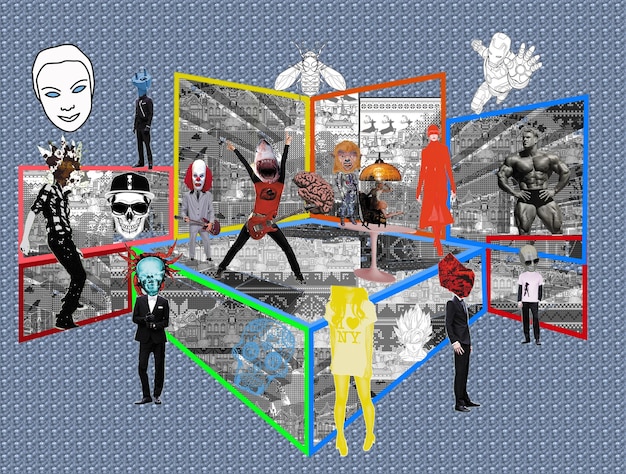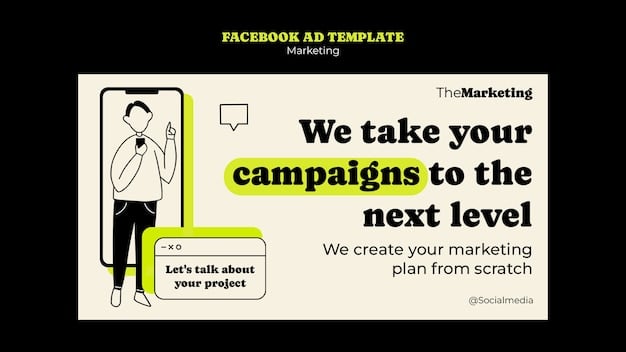Decoding Viral Fails: Avoid These Internet Mistakes

Anúncios
The Anatomy of a Viral Fail: What NOT to Do When Trying to Break the Internet explores common pitfalls and actionable strategies to avoid when creating online content, ensuring your efforts resonate positively with your target audience and sidestep potential backlash.
Trying to go viral? Understanding The Anatomy of a Viral Fail: What NOT to Do When Trying to Break the Internet is crucial. Let’s dive into the common errors that can turn your content into an internet meme for all the wrong reasons.
Anúncios
Understanding the Viral Landscape: A Double-Edged Sword
The internet is a vast and unpredictable landscape. While the dream of going viral is alluring, it’s essential to recognize the inherent risks. Understanding The Anatomy of a Viral Fail: What NOT to Do When Trying to Break the Internet can prevent unintentional missteps.
Content that resonates deeply with audiences can spread like wildfire, catapulting creators to fame and opening doors to unprecedented opportunities. However, the same virality can expose flaws, insensitivities, and misjudgments, leading to swift and severe backlash.
Anúncios
The Allure of Virality
The promise of widespread recognition and influence is a powerful motivator for content creators. Many strive to create content that captures the zeitgeist and spreads rapidly across the internet.
The Pitfalls of Chasing Fame
When the pursuit of virality becomes the sole focus, creators may prioritize sensationalism over substance, leading to content that is tone-deaf, offensive, or simply misguided.

Here’s a checklist to prevent becoming a cautionary tale:
- Be authentic and genuine in your content creation.
- Understand your audience and their values.
- Thoroughly research your topic to avoid misinformation.
- Consider potential ramifications of your content.
The desire for virality must be tempered with careful consideration of the ethical implications and potential consequences of the content being created. A misstep can trigger swift and unforgiving reactions from the online community.
The Tone-Deaf Disaster: Ignoring the Social Climate
One of the most common reasons for viral fails is a lack of awareness of the prevailing social climate. Content that appears out of touch or insensitive to current events can quickly become a PR nightmare. Recognizing The Anatomy of a Viral Fail: What NOT to Do When Trying to Break the Internet in this context is vital.
In an era of heightened social consciousness, netizens are quick to call out brands and influencers for missteps that demonstrate a lack of empathy or understanding. It is easier to go wrong because trends change fast and public sentiment can be really hard to predict sometimes.
The Case of the Ill-Timed Promotion
Launching a celebratory campaign during a period of national mourning or social unrest is a surefire way to attract negative attention. Remember DiGiorno’s hashtag fail during a domestic violence discussion?
Cultural Appropriation and Misrepresentation
Borrowing from other cultures without proper understanding or respect can lead to accusations of cultural appropriation, sparking outrage and damaging reputations.

To avoid a tone-deaf disaster, conduct thorough research:
- Monitor current events and trending topics.
- Understand cultural sensitivities and nuances.
- Seek feedback from diverse perspectives.
- Be prepared to apologize and take corrective action.
Content creators and brands must prioritize empathy, sensitivity, and cultural awareness in their messaging to avoid alienating audiences and damaging their reputations irreparably. This not only strengthens the ethical ground of content creation but also nurtures audience trust which is very essential for long-term success.
The Misinformation Minefield: Spreading Fake News
In the age of fake news, spreading misinformation can have serious consequences. Content that contains false or misleading information can erode trust and damage reputations which makes understanding The Anatomy of a Viral Fail: What NOT to Do When Trying to Break the Internet so important.
The internet is rife with inaccurate information, and users have a responsibility to verify the information they share. Failing to do so can amplify harmful narratives and fuel social division.
The Dangers of Clickbait Headlines
Sensationalized headlines that exaggerate or misrepresent the truth can attract clicks, but they can also lead to mistrust and accusations of manipulation.
The Importance of Fact-Checking
Before sharing any information, it’s crucial to verify its accuracy through reputable sources. This includes checking the credentials of authors, the credibility of websites, and the consistency of information across multiple sources.
These are some important things to keep in mind to avoid spreading false information:
- Cross-reference information with multiple credible sources.
- Be wary of sensationalized headlines and clickbait.
- Consult with experts to verify facts.
- Correct any errors promptly and transparently.
By prioritizing accuracy and transparency, content creators can build trust with their audiences and contribute to a more informed online environment. Remember, misinformation can have real-world consequences.
The Cringeworthy Attempt: Trying Too Hard to Be Funny
Humor is subjective, and what one person finds funny, another may find offensive or simply unfunny. Content that tries too hard to be funny can come across as contrived and embarrassing. The need to understand The Anatomy of a Viral Fail: What NOT to Do When Trying to Break the Internet is evident in this struggle.
Forcing humor often results in awkward interactions and embarrassing moments. Authenticity in comedy is preferred as it generally resonates better with audiences.
The Perils of Forced Jokes
Overly elaborate setups, predictable punchlines, and reliance on tired tropes can all contribute to a cringeworthy attempt at humor.
Understanding Your Audience’s Sense of Humor
What works for one audience may not work for another. Understanding your audience’s preferences and sensibilities is essential for creating humor that resonates.
Here are some tips to prevent failure and create successful comedic content:
- Be authentic and genuine in your attempts at humor.
- Understand your audience’s sense of humor.
- Test your jokes on a small group before sharing them widely.
- Don’t be afraid to poke fun at yourself.
Authenticity is key to successful humor. Overthinking and over-planning can often lead to jokes that feel forced and unnatural. Genuine, spontaneous humor usually performs better than canned routines.
The Ethical Overstep: Crossing the Line
Some content pushes boundaries in ways that are ethically questionable. Content that exploits, objectifies, or promotes harmful stereotypes can generate immediate backlash and do lasting damage. Grasping The Anatomy of a Viral Fail: What NOT to Do When Trying to Break the Internet is vital to avoid ethical missteps.
With greater visibility comes greater scrutiny, and audiences are increasingly intolerant of content that crosses ethical lines. Brands and influencers must consider the potential impact of their messaging on individuals and society as a whole.
Exploitation and Objectification
Content that exploits vulnerable individuals or objectifies others for entertainment purposes can generate immediate outrage and condemnation.
Promoting Harmful Stereotypes
Reinforcing negative stereotypes about race, gender, religion, or other groups can perpetuate prejudice and discrimination. The public is now more media-literate and sensitive to nuanced discrimination.
Ethical guidelines to maintain standards:
- Avoid content that exploits, objectifies, or endangers individuals.
- Challenge, rather than reinforce, harmful stereotypes.
- Promote inclusivity and respect for diversity.
- Consult with ethicists or legal experts when in doubt.
Ethical standards aren’t static; they change as society evolves. Regular reflection and adjustment are necessary to maintain ethical integrity in content creation.
The Legal Landmine: Copyright and Defamation
Content creators must be aware of the legal implications of their work. Copyright infringement and defamation can lead to costly lawsuits and reputational damage. Learning The Anatomy of a Viral Fail: What NOT to Do When Trying to Break the Internet also means learning about the legal landmines.
Ignorance of the law is no excuse, and creators must take steps to ensure that their content complies with all applicable legal regulations.
The Importance of Fair Use
Understanding the concept of fair use is essential for avoiding copyright infringement. Fair use allows limited use of copyrighted material for purposes such as criticism, commentary, news reporting, teaching, scholarship, and research.
Avoiding Defamation Lawsuits
Making false or defamatory statements about individuals or organizations can lead to a lawsuit. Creators must ensure the accuracy of their statements and avoid making malicious or reckless claims.
Steps to ensure compliance:
- Obtain permission before using copyrighted material.
- Understand the limitations of fair use.
- Verify the accuracy of statements before publishing them.
- Seek legal advice when in doubt.
Consulting with a legal expert on matters of copyright and defamation can save content creators from potentially devastating legal battles. Proactive legal compliance is always more effective than reactive damage control.
| Key Point | Brief Description |
|---|---|
| 🚨 Social Awareness | Ignoring current social issues leads to insensitive content. |
| 📰 Fact-Checking | Spreading misinformation erodes trust and causes harm. |
| 😂 Forced Humor | Trying too hard to be funny often results in awkwardness. |
| ⚖️ Ethical Boundaries | Pushing ethical lines can cause immediate backlash. |
Frequently Asked Questions
▼
Content goes viral when it evokes strong emotions, offers practical value, entertains, or aligns with current trends. Sharing also increases when it resonates with personal values or presents a unique perspective.
▼
Always cross-reference information with multiple credible sources, be skeptical of sensational headlines, and consult experts when needed. Correct inaccuracies swiftly and transparently when identified.
▼
Be aware of copyright laws—ensure you have permission or are using materials under fair use. Avoid making defamatory statements and always verify the accuracy of your content before publishing.
▼
Ignoring the social climate can lead to tone-deaf content that offends or alienates audiences. Sensitivity to current events and cultural nuances is crucial for positive engagement.
▼
Avoid content that exploits or objectifies individuals, challenges harmful stereotypes, promotes inclusivity, and reflects on potential societal impacts. Ethical standards evolve, so regular reflection is essential.
Conclusion
In summary, navigating the complexities of viral content creation requires a delicate balance of creativity, awareness, and responsibility. By understanding the anatomy of viral fails, content creators can avoid common pitfalls and create content that resonates positively, ethically, and legally.





